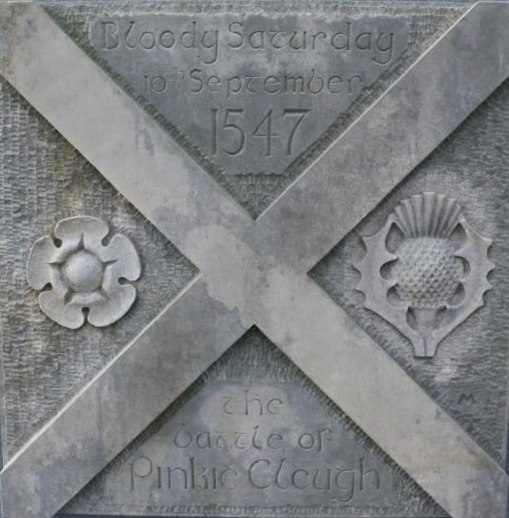History of the Stewarts | Battles and Historic Events
If you are a Stewart Society Member please login above to view all of the items in this section. If you want general information on how to research your ancestors and some helpful links - please look in background information.
If you have a specific question you can contact our archivist.

The Battle of Pinkie
The English mustered at Berwick with approximately 18,000 men and 80 ships. From there, in early September, the army crossed the border, marching north on the main east coast route, supported and supplied by the English fleet. In response the Earl of Arran mustered northern Scottish forces. One of the largest armies ever seen in Scotland estimated at 30,000 men. Once aware of the English route, Arran marched to block their approach at the crossing of the Esk near the coast at Musselburgh.
On the 9th September the English approached from the east and camped at Prestonpans. At the same time, as a diversionary tactic, a smaller force of about 2,500 had been assembled at Carlisle, feigning a major west coast invasion. In response, the earl of Arran mustered northern Scottish forces at Edinburgh and the troops from the south at Falla, about 15 miles to the south-east. Arran marched north to block their approach, where the coast road crossed the river Esk at Musselburgh, while the Scottish horse skirmished with Somerset´s army as they advanced past Dunbar. The Scots were driven off and, in a pursuit for several miles, up to 800 were taken.
The hill on which Inveresk church lay, close to the river, provided an ideal artillery position for Somerset to bombard the Scottish camp but as the English forces advanced the Scots countered by crossing the Esk.
As the main action began, the English cavalry attack was driven off by the Scottish pikes. At the same time both armies began an artillery exchange. In response the English artillery not deployed within the battle array were attacked by a detachment of the few remaining Scottish cavalry, but successfully drove them off. Then, as the Scots advanced, they were met by artillery fire from pieces deployed within the main battle and by small arms fire from a forlorn hope. This forlorn hope was made up of the English gunners who had been placed forward of the rest of the English army. Under this fire, and before the two sides came to hand to hand fighting, much of the Scots army appears to have disintegrated. Though some troops may have retained their battle array and made a fighting retreat, the majority fled back towards Dalkeith, to the south west, with the English in pursuit.
The military power of Arran´s regency was destroyed. The English had lost perhaps 500 men. The Scots had lost more than 6,000 (perhaps even more) and another 2,000 had been taken prisoner.
This battle is often described as the first modern battle because of the innovative use of artillery .
Reference: The Battle of Pinkie Cleuch

